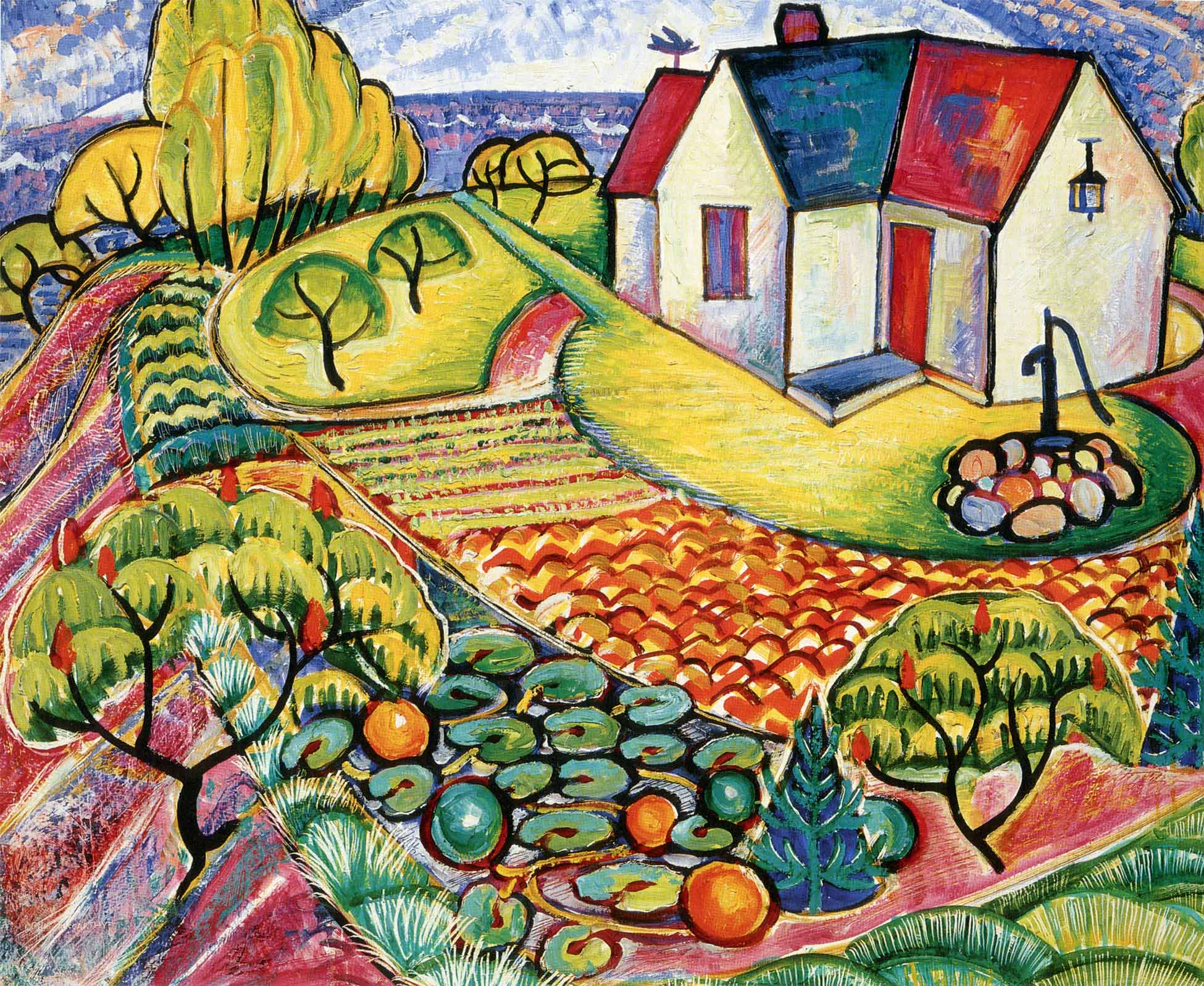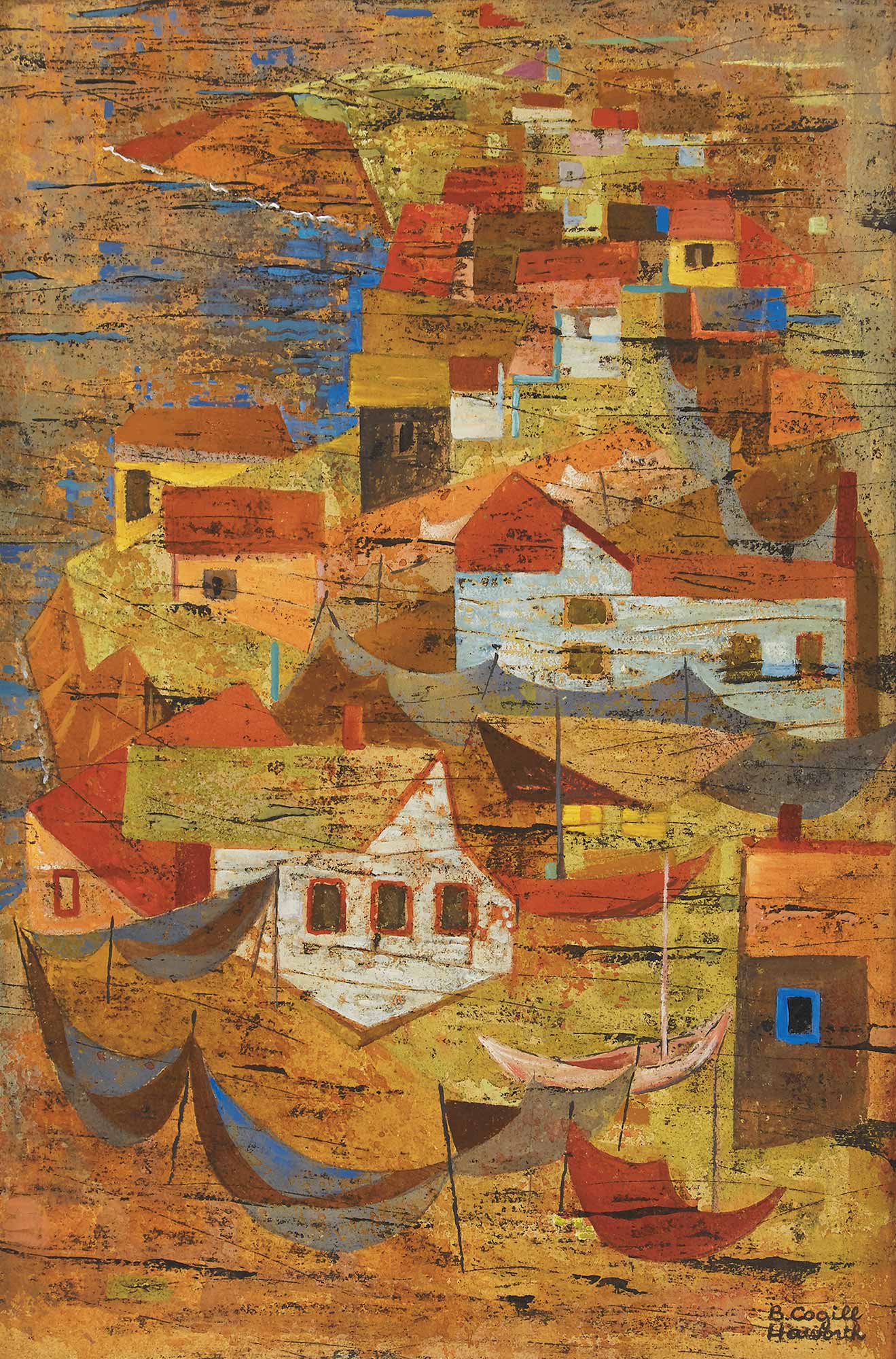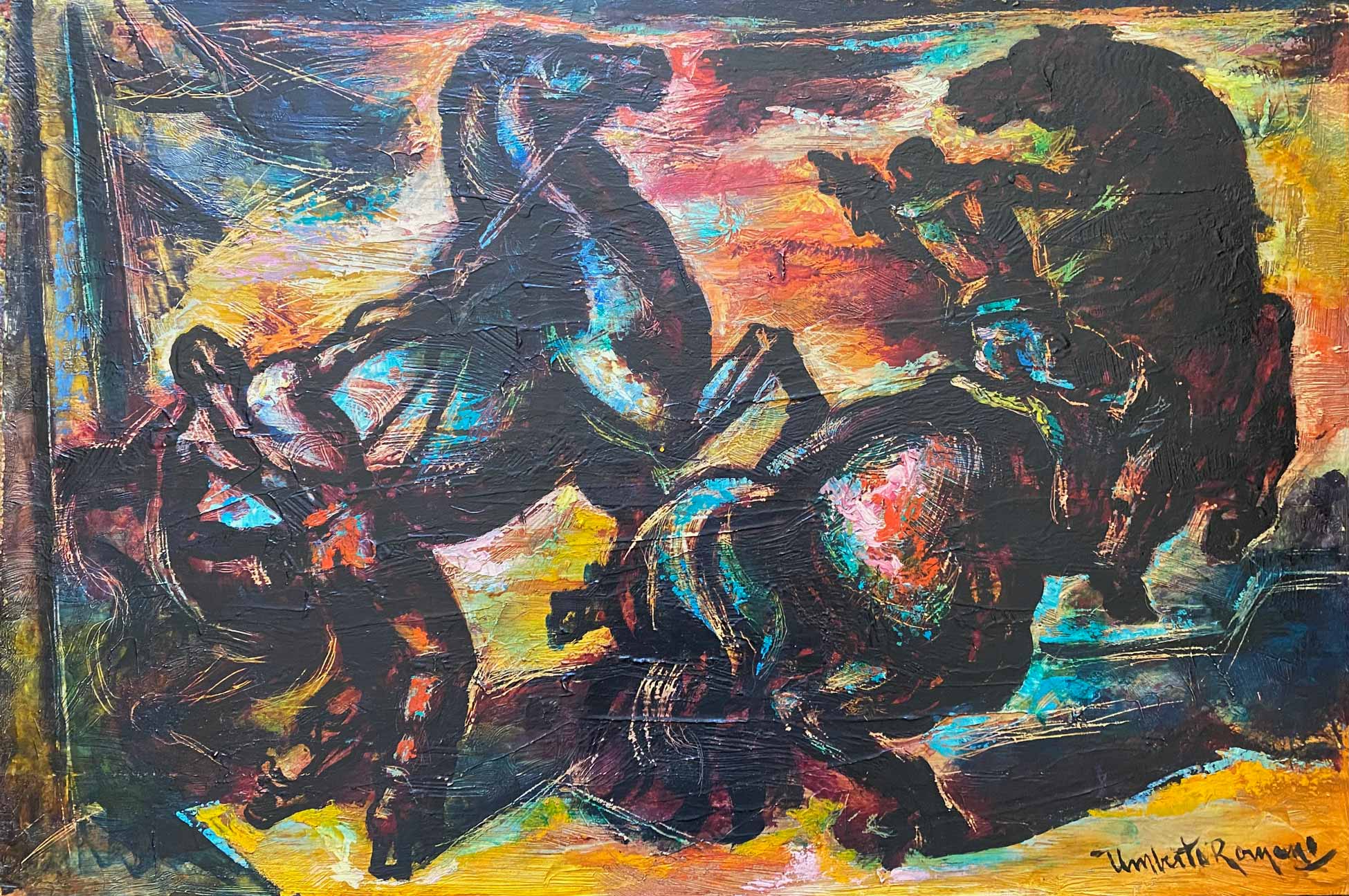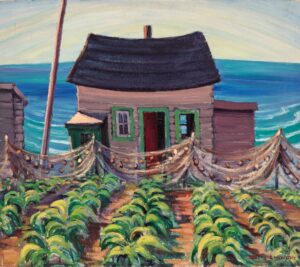Post Romano, Fool’s Paradise 1948

Doris McCarthy, Post Romano, Fool’s Paradise, 1948
Oil on board, 50.8 x 61 cm
Private collection
This colourful, playful image of Fool’s Paradise, McCarthy’s home on the Scarborough Bluffs, echoes the bold tones favoured by the Fauve painters at the beginning of the twentieth century. It departs from McCarthy’s usual realistic depiction of her subject. It may have been inspired by the whimsy she admired in the paintings of her friend and painting companion Bobs Cogill Haworth (1900–1988), the wife of art director Peter Haworth (1889–1986), who had hired her to teach at Central Technical School. As the title suggests, the painting relates to an obscure Italian-born, American painter, Umberto Romano (1905–1982). On a trip to Gloucester, Massachusetts, McCarthy visited Romano’s studio and was captivated by the vibrancy and energy of the paintings she saw there:


I bought a war surplus jeep and loaded two friends into it and we drove to the closest sea… the coast of Maine. Rockport, Maine, was an artists’ colony…. [In] Gloucester [we] visited the studio of a man called Romano…. We walked through his studio and that opened my eyes to the vitality of raw… exciting colour…. I was ready for some new stimulus… fed up with the work I had been doing…. And so I went into what I call in retrospect my Post Romano period, when I played with colour for its own sake, and it shook me loose from a lot of inhibitions.
Generally, McCarthy painted her post-Romano works in primary colours, raw or lightly stirred together, while also using black and pure white paint. Although the phase was short lived, it was critical in removing her fear of experimenting with her technique. From this point on, she broadened the technical range of her work considerably.
McCarthy built Fool’s Paradise, her first and only home, almost singlehandedly, so it is appropriate that this painting represents a new development in her style. Both figuratively and literally, it marks the beginning of her independence. It freed her from her mother’s overbearing attention, especially after the death of her father. Its name constantly reminded her of this escape, as her mother had sarcastically referred to it as “that fool’s paradise of yours.”

 About the Author
About the Author
 More Online Art Books
More Online Art Books
 Acknowledgements
Acknowledgements